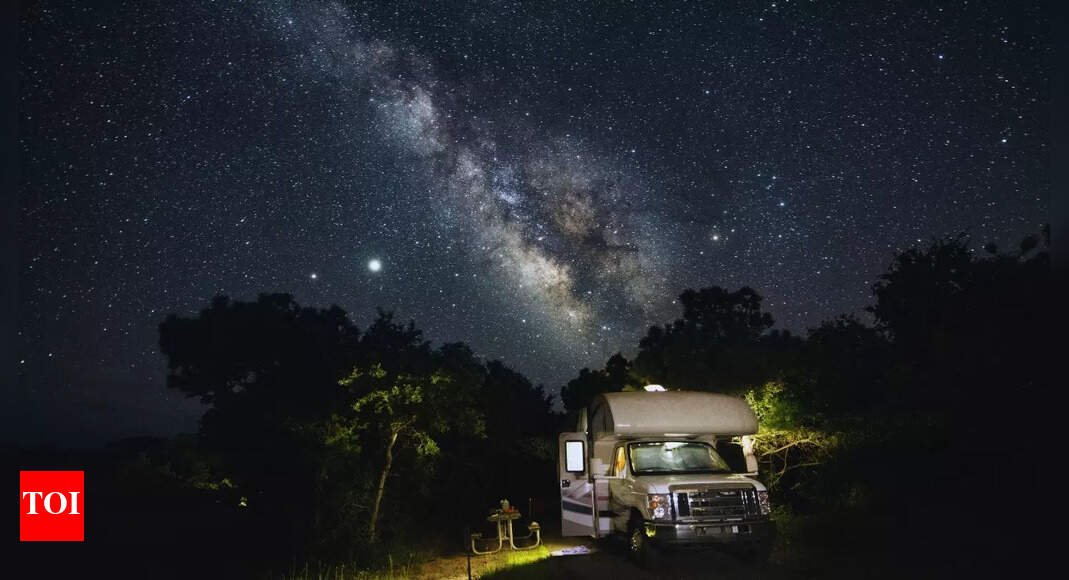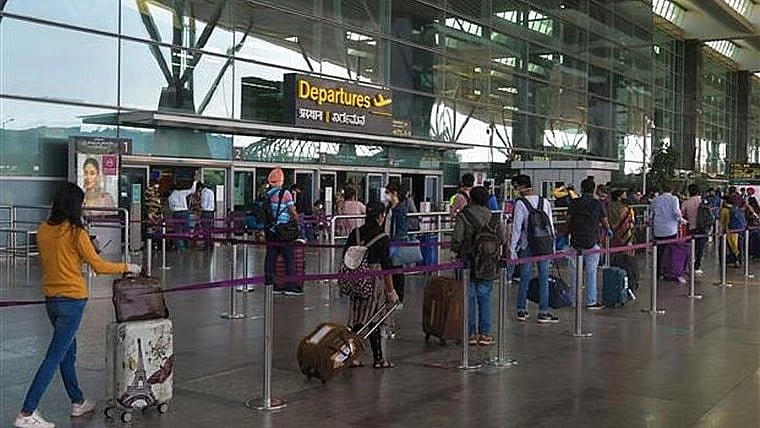Travel Guides & Articles
Japan Joins Singapore, India, South Korea, Malaysia, and China in Emerging as Tourism Giants of Asia With Record Tourist Arrivals in the First Half of 2025

Published on
August 21, 2025
By: Rana Pratap
Japan joins Singapore, India, South Korea, Malaysia, and China in emerging as tourism giants of Asia because all six countries have achieved record tourist arrivals in the first half of 2025. The reason is a mix of new flight connections, stronger marketing campaigns, visa relaxations, and rising demand from younger travellers. Together, Japan, Singapore, India, South Korea, Malaysia, and China are not just welcoming visitors in higher numbers but also proving that Asia’s destinations are leading the global recovery of tourism with record-breaking performance.
Japan has demonstrated steady recovery and resilience, while Singapore stands out with its connectivity and high-value visitors. India, with its vast cultural pull, is climbing fast and securing a major role in Asia’s tourism leadership. South Korea continues to captivate with its blend of tradition and K-wave influence, while Malaysia strengthens its position as a multi-cultural hub. China, with its huge outbound and inbound potential, remains a central player. Together, Japan, Singapore, India, South Korea, Malaysia, and China highlight how the region is rewriting the narrative of global tourism.
The numbers of record tourist arrivals show a new chapter for the Asian travel market. These nations are no longer emerging—they are already established as tourism giants. With airlines adding routes, hotels expanding capacity, and governments backing strong tourism policies, the momentum is clear. By the first half of 2025, Japan and its peers—Singapore, India, South Korea, Malaysia, and China—have proven that Asia is the beating heart of the world’s travel growth.
Japan sets new standards with record arrivals
Japan recorded 21.5 million visitors in the first six months of 2025, the fastest pace in its history. By July, that number rose to 24.9 million, a surge of 18.4% year on year. Tokyo, Osaka, and Kyoto are drawing younger travellers on school trips, while regional cities are gaining longer stays thanks to policy incentives.
The weak yen has boosted spending power for foreign tourists, making Japan one of the most affordable developed destinations. New flight routes, extended visas, and the government’s push to raise per-visitor spend to $1,355 are reshaping travel flows. The growth is broad-based, but China and the United States stand out as top source markets, while Hong Kong and South Korea slipped due to typhoon disruptions and social media rumours about natural disasters.
Japan’s challenge now is balancing volume with value. Authorities want visitors to stay longer, spend more, and explore beyond the major hubs. The strategy is clear: spread tourism wealth across regional economies while maintaining record-breaking arrivals.
Japan – Tradition Meets Modern Energy
Japan blends centuries-old traditions with futuristic cities.
- Places to Visit: Tokyo’s Shibuya Crossing, Kyoto’s temples, Mount Fuji, and Hokkaido’s landscapes.
- Things to Do: Experience a tea ceremony, shop in Akihabara, bathe in hot springs, and ride the Shinkansen.
- Why Go: Japan is a balance of calm shrines and neon buzz.
Singapore strengthens its hub advantage
Singapore has proven once again why it is Asia’s leading aviation and tourism hub. In the first four months of 2025, the country welcomed 5.71 million visitors, slightly higher than the same period in 2024. While the percentage growth appears modest, the absolute numbers are massive given Singapore’s size.
India has been a standout market, sending over 500,000 visitors in the first half of 2025. China’s resurgence is also visible thanks to the 30-day mutual visa exemption that came into effect in 2024.
The city-state benefits from world-class infrastructure, Changi Airport’s seamless connectivity, and attractions like Marina Bay Sands, Sentosa, and Gardens by the Bay. With projections of 17 to 18.5 million visitors in 2025, Singapore continues to consolidate its place as a tourism giant in Asia, offering premium experiences for leisure, business, and events travel.
Singapore – Small but World-Class
Singapore shines with its global hub energy.
- Places to Visit: Marina Bay Sands SkyPark, Gardens by the Bay, Sentosa Island, and Chinatown.
- Things to Do: Taste hawker centre food, shop on Orchard Road, take a river cruise, and enjoy nightlife at Clarke Quay.
- Why Go: Compact yet packed, Singapore is Asia’s luxury playground.
India rides a diverse wave of inbound tourism growth
India is no longer just a powerhouse for domestic travel. In the first half of 2025, the country’s inbound tourism has surged, fuelled by demand from both developed and regional markets. Foreign Tourist Arrivals (FTAs) climbed steadily, reaching nearly 1 million in 2024 before accelerating into 2025 with strong momentum. This growth is being led by visitors from the United States, Australia, Canada, the UK, Germany, France, Singapore, Malaysia, Sri Lanka, and Bangladesh, which are now among the top source markets.
The United States continues to top the charts, sending 1.8 million visitors in 2024, while European arrivals have shown double-digit growth, reinforcing India’s image as a cultural and adventure destination. Asian neighbours have also remained consistent contributors, with Singapore and Malaysia adding strong numbers to the inbound mix. India’s appeal spans wellness retreats, yoga and Ayurveda circuits, historical landmarks, medical tourism, and mega cultural festivals, creating a diversified tourism portfolio.
Tourism’s impact is also being felt across India’s economy. The sector’s share of GDP climbed from 1.5% in 2020–21 to more than 5% by 2023–24, underlining its growing importance. Employment linked to tourism also expanded from 68 million jobs to 84.6 million, showing how tourism is helping communities and industries alike. The government’s continued investment in digital visas, airport modernisation, and improved connectivity supports this rapid rise.
With inbound tourism momentum spreading across source markets, India is steadily positioning itself as one of Asia’s emerging giants. The challenge is to keep improving infrastructure while ensuring visitors have longer stays and spend more across regional destinations. This focus will decide how far India can climb the global tourism ladder by the end of the decade.
India – Colours, Culture, and Chaos
India overwhelms the senses in the best way.
- Places to Visit: Taj Mahal, Jaipur’s forts, Kerala backwaters, and Goa’s beaches.
- Things to Do: Ride a houseboat, join a yoga retreat, explore spice markets, and attend festivals like Holi.
- Why Go: Diversity makes every corner of India feel like a new country.
South Korea rides the K-wave to record growth
South Korea continues to ride the global popularity of K-dramas, K-pop, and esports. The country welcomed 5.58 million foreign visitors between January and April 2025, a 14.6% rise year on year. In June alone, arrivals touched 1.62 million, up 14.2%, pushing the nation toward a possible 20 million visitors for the year.
Tourism authorities have leaned heavily on the K-culture wave to attract younger travellers. Events, concerts, and festivals are pulling tourists into Seoul, Busan, and Jeju. Shopping, technology experiences, and themed attractions are key magnets.
The weak won also adds spending power for inbound travellers, while airport expansions and improved connectivity from Southeast Asia, North America, and Europe are fuelling demand. South Korea is now positioning itself as a cultural and entertainment tourism giant in Asia.
South Korea – Trendy and Timeless
South Korea is a mix of K-pop energy and ancient palaces.
- Places to Visit: Seoul’s Gyeongbokgung Palace, Busan beaches, Jeju Island, and DMZ tours.
- Things to Do: Try Korean BBQ, shop in Myeongdong, hike Bukhansan, and explore K-drama filming spots.
- Why Go: It’s pop culture wrapped in history.
Malaysia thrives with visa-free access and regional strength
Malaysia has shown one of the fastest recoveries in Southeast Asia. Between January and May 2025, the country received 16.9 million international visitors, a sharp 20% year on year growth. The boom is driven by strong ASEAN markets, especially Singapore, which sent over 8.3 million visitors.
China has also surged as a top source, with arrivals climbing 35.6% year on year to over 2.1 million in the same period. This follows Malaysia’s decision to extend visa-free entry for Chinese and Indian visitors until 2026, giving a powerful boost to arrivals.
Malaysia’s success lies in its dual strategy—capitalising on regional short-haul flows while boosting long-haul links. Kuala Lumpur, Langkawi, Penang, and Sabah continue to shine, while eco-tourism and cultural tourism are climbing the ranks. Malaysia is emerging as a tourism powerhouse with a balanced mix of leisure, business, and family travel.
Malaysia – Tropical and Cultural Fusion
Malaysia is a melting pot of cultures with nature escapes.
- Places to Visit: Kuala Lumpur’s Petronas Towers, Penang’s George Town, Langkawi, and Borneo’s rainforests.
- Things to Do: Street food tours, island hopping, snorkelling, and cave exploring in Batu Caves.
- Why Go: A mix of city life, beaches, and jungles all in one trip.
China’s inbound recovery signals a global shift
China has surprised many with a dramatic recovery in foreign arrivals. In the first half of 2025, the country logged 38 million cross-border trips by foreign nationals, up 30.2% year on year. Of these, 13.6 million were visa-free entries, rising 53.9%, thanks to a sweeping visa-exemption strategy.
China has extended visa-free travel to dozens of countries, now covering about 75 nations. This policy is reshaping inbound tourism, easing business travel, and boosting leisure visits. While the numbers include both tourism and business, the scale of growth underlines a powerful comeback.
Cities like Beijing, Shanghai, Guangzhou, and Shenzhen are driving demand with upgraded airports, convention centres, and cultural attractions. China is also promoting “red tourism,” eco-friendly destinations, and high-speed rail itineraries, ensuring visitors see more than the classic hubs. The rebound shows China’s ambition to reclaim its place as a leading global tourism power.
China – Grand and Endless Adventures
China is vast, with history stretching back millennia.
- Places to Visit: Great Wall, Forbidden City, Terracotta Warriors, and Guilin’s karst mountains.
- Things to Do: Cruise the Yangtze, ride high-speed trains, explore panda reserves, and wander old towns like Lijiang.
- Why Go: Sheer scale and variety — from mega-cities to timeless villages.
The bigger picture: Asia leads global tourism revival
The rise of Japan, China, South Korea, Malaysia, Singapore, and India underscores a larger trend. Asia is no longer catching up—it is leading. Inbound tourism is booming thanks to favourable currencies, new flight routes, digital visas, and powerful cultural exports.
The UN Tourism body has already reported that Asia and the Pacific saw 12% growth in Q1 2025, the fastest globally. With over 24.9 million visitors in Japan, 38 million foreign entries in China, and rapid growth across Southeast Asia, Asia is setting the pace for the world.
Challenges remain. Overcrowding, sustainability, and infrastructure pressures are rising. But governments are responding with smart policies, from Japan’s regional stay incentives to Malaysia’s visa-free strategy and India’s e-visa expansion. The future of tourism is being written in Asia, and the first half of 2025 proves that the region’s giants are here to stay.
Japan joins Singapore, India, South Korea, Malaysia, and China in emerging as tourism giants of Asia because all six nations recorded historic tourist arrivals in the first half of 2025, driven by new flight routes, relaxed visa rules, and booming travel demand.
Asia’s giants redefine the future of travel
The first half of 2025 has cemented Asia’s position at the centre of global tourism. Japan is breaking records, China is bouncing back, South Korea is surfing the cultural wave, Malaysia is unlocking regional potential, Singapore is consolidating its hub role, and India is rising with promise.
These six nations are emerging as the tourism giants of Asia. Their combined momentum is reshaping travel flows, boosting regional economies, and redefining how the world experiences tourism. The second half of 2025 will only confirm what the first half has already shown—Asia is leading the global travel future.
Travel Guides & Articles
Beyond wildlife: India’s best nature trips to plan before 2025 ends |

The wildlife season is just around the corner, and we are excited about that. But this time, we are not here for that. For nature lovers, India’s diverse landscapes do not disappoint. Here we are looking at experiences beyond wildlife safaris, from lush valleys to serene backwaters. The winter months will provide perfect weather for exploring the outdoors. Here are eight exceptional nature trips across India to plan before the year ends.
Mawlynnong, Meghalaya
From Shillong Airport, Mawlynnong is located just 90 km. Also known as Asia’s cleanest village, Mawlynnong’s forests, waterfalls, and living root bridges are some of the best things you will experience in Northeast India. Not to forget, winter is the time when Dawki River (located just 30 km from Mawlynnong) is at it’s best form. Crystal clear water of Dawki River will leave you mesmerised. When in Mawlynnong, stay in village guesthouses. They are budget-friendly, and will let you have authentic traditional stay experience.
Dandeli, Karnataka
Located just 125 km from Goa Airport, Dandeli is nestled in the Western Ghats’ foothills. Its dense forests and Kali River offer adventure and serenity. Its flat terrain and riverine landscape are photogenic, perfect for the ‘gram.’ If you can, take out time to go rafting on the Kali River, or trek to Kavala Caves.Bhitarkanika National Park, OdishaLocated just 150 km from Bhubaneswar Airport, this mangrove ecosystem and wetland, spans 672 sq km. It offers serene boat rides through creeks and sightings of crocodiles and migratory birds. Bhitarkanika is a beautiful mix of wildlife and offbeat travel. Cruise through mangroves, spot estuarine crocodiles, or visit the Olive Ridley turtle nesting site at Gahirmatha.Gokarna, KarnatakaGokarna is located approximately 150 km from Goa Airport. It’s a quieter alternative to Goa. Gokarna’s pristine beaches and coastal cliffs offer a laid-back nature escape, far from the hustle and bustle of an over-crowded (and expensive) tourist trap. Here’s what to do in Gokarna: Relax on Om Beach, trek to Kudle Beach, or visit Half Moon Beach for solitude. The Mahabaleshwar Temple is a beautiful addition to your serene coastal holiday.
Travel Guides & Articles
Top 6 Places To Spot Black Panthers In India – Travel and Leisure Asia

Top 6 Places To Spot Black Panthers In India Travel and Leisure Asia
Source link
Travel Guides & Articles
Travel Drops 8% In June 2025

New Delhi: For the first time since 2001, excluding the Covid-19 years, the number of Indians visiting the United States has fallen as 2.1 lakh Indians travelled there in June 2025, which is an 8 per cent drop compared to 2.3 lakh in the same month last year, according to the US Commerce Department’s National Travel and Tourism Office (NTTO).
The downward trend seems to be continuing in July as well, with provisional data showing a 5.5 per cent decline compared to July 2024.
This slowdown is part of a broader global trend. NTTO data shows that overall international arrivals to the US also fell, with a 6.2 per cent drop in June, 7 per cent in May, 8 per cent in March, and 1.9 per cent in February.
Only January and April saw increases of 4.7 per cent and 1.3 per cent, respectively.
India continues to be the fourth largest source of international visitors to the US. Since Canada and Mexico share land borders with America, India ranks as the second largest overseas market after the UK, followed by Brazil in fifth place.
Together, these five countries contributed nearly 60 per cent of all international arrivals to the US in June.
Traditionally, Indian travellers to the US include students, business professionals, and those visiting friends and relatives.
Leisure travel to America has always been less popular compared to destinations like Southeast Asia, the Middle East, and Europe.
The current slowdown is being seen most clearly among students, though experts believe that business and family visits could also be affected if visa delays and constraints continue.
The Indian diaspora in the US is strong, with over 50 lakh people, which has generally ensured a steady flow of travel.
In fact, NTTO data shows that every June since 2001 had recorded higher numbers than the year before — until now.
April this year had been a positive month for Indian travellers overall, with 29 lakh people flying abroad.
The UAE was the top destination, followed by Saudi Arabia, Thailand, Singapore, and the US.
(Except for the headline, this article has not been edited by FPJ’s editorial team and is auto-generated from an agency feed.)
-
Tools & Platforms3 weeks ago
Building Trust in Military AI Starts with Opening the Black Box – War on the Rocks
-

 Business2 days ago
Business2 days agoThe Guardian view on Trump and the Fed: independence is no substitute for accountability | Editorial
-

 Ethics & Policy1 month ago
Ethics & Policy1 month agoSDAIA Supports Saudi Arabia’s Leadership in Shaping Global AI Ethics, Policy, and Research – وكالة الأنباء السعودية
-

 Events & Conferences3 months ago
Events & Conferences3 months agoJourney to 1000 models: Scaling Instagram’s recommendation system
-

 Jobs & Careers2 months ago
Jobs & Careers2 months agoMumbai-based Perplexity Alternative Has 60k+ Users Without Funding
-

 Education2 months ago
Education2 months agoVEX Robotics launches AI-powered classroom robotics system
-

 Funding & Business2 months ago
Funding & Business2 months agoKayak and Expedia race to build AI travel agents that turn social posts into itineraries
-

 Podcasts & Talks2 months ago
Podcasts & Talks2 months agoHappy 4th of July! 🎆 Made with Veo 3 in Gemini
-

 Podcasts & Talks2 months ago
Podcasts & Talks2 months agoOpenAI 🤝 @teamganassi
-

 Mergers & Acquisitions2 months ago
Mergers & Acquisitions2 months agoDonald Trump suggests US government review subsidies to Elon Musk’s companies





















